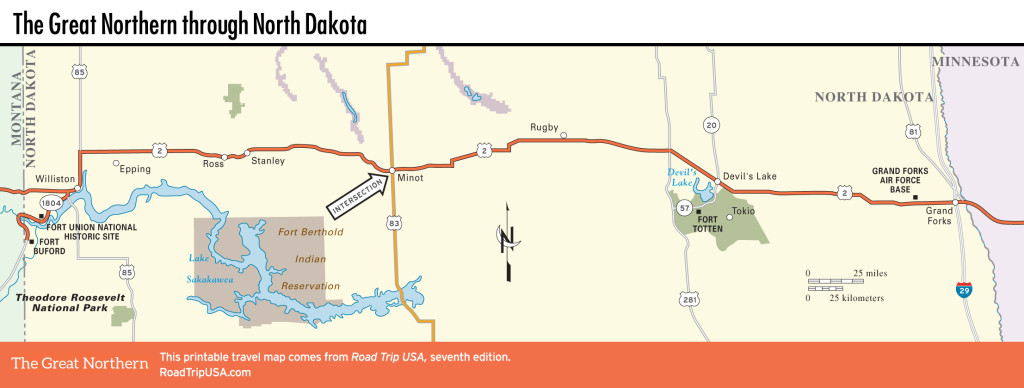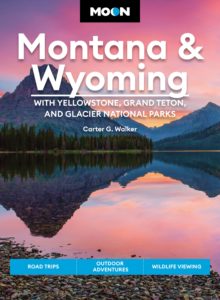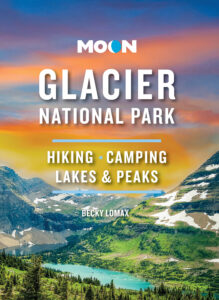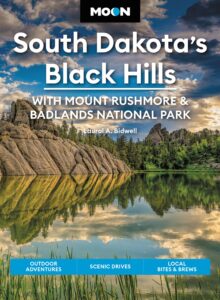Grand Forks
The oldest and second-largest community in North Dakota, and frequently rated one of the “Top 10 Most Livable Places” in the country, Grand Forks (pop. 56,948) gained a place in the national headlines during the terrible floods that devastated the city in April 1997. Following one of the worst winters on record, during which blizzard after blizzard dumped over 8 ft (2.4 m) of snow and ice on the surrounding plains, Grand Forks prepared for the North Plains’ worst floods in living memory. The Red River of the North, which forms the state border between North Dakota and Minnesota, rose an inch every hour, 2 ft (0.6 m) a day, day after day, while volunteers and relief workers struggled to protect the town.
Under the watchful eyes of the national news media, the river continued to rise, finally breaching its sand-bagged banks and inundating the town. The entire population was evacuated, and over 75 percent of the homes and buildings were flooded; many were partially submerged for more than a month until the waters finally receded and cleanup could begin. Total damage reached over $1 billion, but miraculously, not a single death was attributed to the floods. Grand Forks quickly and energetically set about rebuilding itself, and today a lone obelisk along the riverside shows the high-water mark.
Many century-old downtown buildings have been renovated, including the landmark Empire Theater (415 DeMers Ave., 701/746-5500), now an arts center. Another of Grand Forks’s liveliest institutions is the 15,000-student University of North Dakota, whose pretty brick campus spreads north of DeMers Avenue (old US-2). A former campus gym is now home to the North Dakota Museum of Art (701/777-4159, daily, donation), which survived the flood unscathed and houses the state’s only contemporary art collection.
Where to Eat and Stay in Grand Forks
For weary road-trippers, one place you’ll definitely want to stop is legendary Whitey’s Underground (121 DeMers Ave., 218/773-1831), across the river on the new “boardwalk” of East Grand Forks. Though legally in Minnesota, this is a true Grand Forks institution, a genuine speakeasy dominated by the fabulous art deco-style “Wonderbar”—a horseshoe-shaped stainless-steel sculpture that is surrounded by comfy booths and a jukebox. The food and drink—try the pan-fried walleye, best washed down with a bottle of microbrew Summit Ale—is excellent, but the ambience alone would be worth the visit. Another characterful old Grand Forks landmark, The Kegs (901 N. 5th St., 701/787-5347) is an outdoor root-beer stand supported by, you guessed it, a massive pair of bright orange wooden-looking kegs. Look for them north of downtown; order a sloppy joe and a side of onion rings, and people will think you belong here.
Right downtown, the best bet for food and drink is the Toasted Frog (124 N. 3rd St., 701/772-3764, 4pm-11pm Mon.-Thurs., 4pm-midnight Fri.-Sat.), a popular sandwich and martini bar with an excellent range of beers, near the landmark Empire Theater.
Lodging options include the usual range of national chain motels out around the junction of US-2 and I-29; close to downtown there’s also the attractive Red Roof Inn Townhouse (710 1st Ave. N, 701/746-5411, $65 and up), with an indoor pool and on-site miniature golf course.

















